Writer and film maker Richard Gaikowski has been named as a Zodiac suspect by Tom Voigt of the website Zodiackiller.com. According to Voigt, Gaikowski allegedly assumed the role of editor for the San Francisco Express Times sometime in the spring of 1969; in April of that year, the newspaper changed its name to the San Francisco Good Times.
On his website, Voigt wrote: “At the time of his murder, the Good Times ‘switchboard’ was located only yards from the residence of Zodiac victim Paul Stine on Fell Street in San Francisco.” Voigt apparently based this claim on a paragraph which had appeared in Gaikowski’s Good Times column titled “D gaik’s short bits.”
Voigt’s site also featured a Google photograph of the two locations in question with Voigt’s captions.
Paul Stine did live at 1842 Fell Street, and 1830 Fell Street was, in fact, the home of a switchboard. However, Voigt’s attempt to link Stine to the Good Times, and his suspect, Richard Gaikowski, appears to be based on a false assumption. A quick Google search for “1830 Fell Street” and “switchboard” yielded these results.
The switchboard located at 1830 Fell Street was actually the famous “Haight-Ashbury Switchboard,” a fixture of the Bay Area counter-culture in the late 1960s and 1970s. Al Rinker founded the Switchboard in 1967 and wrote this mission statement. “The Switchboard is a volunteer service designed to facilitate communication among people throughout San Francisco, and specifically to serve as an informational and referral source for the Haight-Ashbury community.” As noted on the Wikipedia page and other Internet articles, the Switchboard was quickly overwhelmed by the needs of the counter-culture community and subsequently devoted much of its resources to finding “crash pads” for wandering hippies and assisting “runaways” new to the Bay Area while dealing with worried and irate parents. The Switchboard became a focal point in the Haight-Ashbury district and a legend among those in the counter-culture movement.
The Switchboard did not serve as the switchboard for the Good Times newspaper. In fact, the Good Times had no need for a switchboard and had phones in its office at 2377 Bush Street. A page from Steal This Book by famous activist Abbie Hoffman contained the following information:
Hoffman wrote Steal This Book in 1970 and the popular anti-establishment treatise was published in 1971. The book notes the phone number of the Haight-Ashbury Switchboard as “387-3575,” the same number listed for the Haight-Ashbury switchboard in an August 1969 issue of the Good Times.
Al Rinker ran the Haight-Ashbury Switchboard until 1970 when some of his volunteers assumed control and later moved the operation to 1797 Haight, then to 1921 Hayes St. near Ashbury, and finally to 1539 Haight St. The Switchboard continued to offer services to the citizens of the Bay Area throughout the 1970s and into the 1980s and finally closed in 1986.
In one of his many writings from the late 1980s, Blaine Blaine, Gaikowsk’s only accuser and Voigt’s chief informant, noted the proximity of the Switchboard to the residence of Zodiac victim Paul Stine, writing, On Stine: Did you know Stine lived either in or near the same building where the old Haight Ashbury switchboard was located on Fell Street? The Switchboard then use to sell the GOOD TIMES underground newspaper and Gaikowski used to, with Chris Robeson, deliver them there.
Given the nature and purpose of the Switchboard, the fact that the Good Times was available there, along with other underground newspapers from the Bay Area, cannot be viewed as evidence linking Gaikowski to Stine. Blaine claims that Gaikowski delivered editions of the Good Times to the Switchboard, but Blaine has a documented history of exaggerating and even inventing his own stories to suit his needs. The facts indicate that the proximity of the Switchboard to the home of Paul Stine is not credible evidence linking Gaikowski to Stine, and that the house on 1830 Fell Street had no legitimate or significant connection to the Good Times or Gaikowski as Voigt claims. Even Blaine, who worked for the Good Times, described the house at 1830 Fell Street as the location of the old Haight Ashbury switchboard and not as the switchboard for the Good Times.
Voigt first posted his claims regarding the switchboard in April 2008. After I posted this information about the Haight-Ashbury switchboard on Monday, July 19th, 2010, Voigt claimed that he did possess evidence to back up his claim that the Good Times newspaper referred to the Haight-Ashbury switchboard as “the Good Times switchboard.” I wrote that Voigt should present this evidence but he refused to do so. In one of his bizarre emails dated Monday, July 19, 2010 8:47 PM Voigt wrote: “It is also irrelevant if eveyone referred to it as the “Good Times” switchboard. What IS relevant is the Good Times newspaper referred to it — IN PRINT — as their own switchboard, and directed people to leave them messages and materials there, since much of their readership lived in the Haight and expecting them to make the trek all the way to Bush Street lugging items to donate wasn’t reasonable.” On Tuesday, July 20, 2010 12:37 AM, Voigt wrote, “I have examples galore of the “Good Times” newspaper referring to the Fell Street switchboard as the “Good Times” switchboard back in 1969 and 1970. But I aint’ gonna scan, upload and post said examples until Muck Bitterfield admits that such an example(s) would be significant with regard to his latest pissy rant.” On Monday, October 18, 2010 3:58:53 PM, Voigt “Tweeted,” “Think I’ll get an apology after I post it? Ne neither. He’ll just dismiss it as not mattering. So… what’s the point of me posting it again?” Voigt never posted even one of his examples galore of the Good Times newspaper referring to the Fell Street switchboard as the “Good Times” switchboard back in 1969 or 1970. Instead, he posted the following message at his Twitter page on November 24, 2010:
“I have been accused of lying when I said — back in April 2008 — that the Good Times newspaper referred to the Haight switchboard as “the Good Times switchboard.” While I didn’t purchase the issue where I saw that reference, I’m sure I’ll get my hands on it again one day. For now, I have found something that clearly demonstrates the close relationship between the Good Times newspaper and that particular switchboard, of which there were many around the Bay Area. Quite simply, by August 1969 the newspaper had adopted the Haight switchboard due to its proximity to a majority of the newspaper’s San Francisco readers. When the newspaper needed its readers to bring donated items to help the Good Times commune, they directed them to the nearby Haight switchboard. In return for that service, the newspaper helped keep that switchboard afloat financially. Obviously the newspaper highly valued that particular switchboard by encouraging people to help them over other services and causes. FROM A 1970 ISSUE: (see “gtstoast.jpg” attachment) Thus, staffers of the Good Times would frequent the switchboard to retrieve said items, thus placing them within yards of the residence of Zodiac victim Paul Stine. I hope nobody still has doubts as to my honesty.
Voigt posted a clipping from the Good Times which read:
“The Haight-Ashbury switchboard would like to thank the Good Times’ readers for coming up with enough bread for us to pay the bills.”
Voigt claims that he saw an issue of the Good Times which referred to the Haight-Ashbury switchboard as the “Good Times switchboard.” Voigt claims he didn’t purchase this issue yet he cites its alleged content in his attempts to link Gaikowski and the Good Times to the switchboard and, in turn, to the address of Zodiac victim Paul Stine. While Voigt claims that this issue referred to the switchboard as the “Good Times switchboard” he does not quote any text from this alleged reference or even the context. He simply says that the newspaper referred to the switchboard in this manner without providing any proof.
Voigt had written: “I have examples galore of the ‘Good Times’ newspaper referring to the Fell Street switchboard as the “Good Times” switchboard…” After he claimed that he had “examples galore” proving that the Good Times newspaper referred to the Haight-Ashbury switchboard as “the Good Times switchboard,” Voigt then wrote, “While I didn’t purchase the issue where I saw that reference, I’m sure I’ll get my hands on it again one day.” One has to wonder which version is true: Did Voigt see one newspaper with this reference but didn’t buy it, or, does he possess examples galore of such references?
Voigt does not cite the sources of his information regarding the Good Times, its policies, practices and actions. Voigt claims that the newspaper asked readers to leave donations for the Good Times commune at the switchboard yet Voigt never cites or presents any evidence to support this claim. Was this information also in another issue of the Good Times which Voigt read but apparently did not purchase or transcribe? If Voigt had any clippings from the newspaper which stated that the Good Times was asking its readers to leave donations for the Good Times commune at the Haight-Ashbury switchboard, one wonders why he didn’t present this proof when he made this claim.
Voigt claims that the Good Times newspaper had “adopted“ the Haight-Ashbury switchboard and that the newspaper itself had “helped keep the switchboard afloat financially.” Again, Voigt does not cite any source for this claim and does not provide any clipping or transcription from the Good Times. The statement printed in the Good Times read, “The Haight-Ashbury switchboard would like to thank the Good Times’ readers for coming up with enough bread for us to pay the bills.” The statement does not refer to “our reader” and does not state that the switchboard was the Good Times switchboard. This statement does not indicate that the newspaper was paying the switchboard bills. The switchboard is defined as a separate entity altogether and the word “us” does not specify the newspaper as the payer of switchboard bills. One can argue that the word “us” refers to the Good Times but the text does not suggest this. The text states that the Haight-Ashbury switchboard was the source of the bills in question. The statement could easily read, “All of US at the Haight-Ashbury switchboard would like to thank the readers of the Good Times for coming up with enough bread for US to pay the bills.” In fact, this would appear to be the more logical interpretation of the statement. Since the Haight-Ashbury switchboard was a prominent fixture of the counter-culture community in the Bay Area and the Good Times was one of the most popular counter-culture newspapers in the Bay Area, the notion that the Good Times would solicit help from its readers to aid the switchboard and keep it “afloat financially” seems far more logical and likely. The Good Times newspaper and commune, which sold its issues for as little as a quarter, supported and financed the newspaper and the commune, had to support, feed and care for many people, and had its own financial worries and burdens. The notion that the newspaper and commune would pay the bills for the switchboard seems odd given the facts; the notion that the Good Times would ask its readers to donate in order to help the prominent switchboard makes perfect sense. The statement in the Good Times would appear to be a notice or ad from the switchboard thanking the readers for helping to pay the bills. The statement does not appear to indicate that the switchboard was thanking the Good Times readers for donating items intended for the Good Times commune, or, that the Good Times was thanking its own readers for donating such items.
Voigt said of the items allegedly left at the switchboard location but intended for the Good Times commune: “Thus, staffers of the Good Times would frequent the switchboard to retrieve said items, thus placing them within yards of the residence of Zodiac victim Paul Stine.” Voigt claimed that the Good Times used its newspaper to solicit donations for the commune and asked the readers to leave these items at the switchboard, yet Voigt did not present any evidence to substantiate this claim, and then Voigt added to this claim by stating that Good Times staff frequented the switchboard in order to retrieve these items. Voigt does not cite a source for this information. Blaine Blaine worked at the Good Times and, in the late 1980s, he wrote: “On Stine: Did you know Stine lived either in or near the same building where the old Haight Ashbury switchboard was located on Fell Street? The Switchboard then use to sell the GOOD TIMES underground newspaper and Gaikowski used to, with Chris Robeson, deliver them there.” Blaine did not claim that the Good Times newspaper had referred to the Haight-Ashsbury switchboard as the “Good Times switchboard,” nor did he mention any significant relationship between the switchboard and the newspaper.
Voigt relies heavily on innuendo, distortions, unsubstantiated claims and more in his campaign to promote Richard Gaikowski as a viable Zodiac suspect. Voigt used these methods for years as he promoted suspect Arthur Leigh Allen. On his webpage devoted to Allen titled The Allen-Zodiac Connection, Voigt writes: “Finally, in 1971 Allen’s father, Ethan, died. The date was March 17…Darlene’s birthday. It was yet another occasion when someone close to Allen died on a significant Zodiac date.” Voigt did not name any occasion when “someone close to Allen died on a significant Zodiac date” other than the death of Allen’s father. Ethan Allen died from prostate cancer, and there is no evidence or even the faintest allegation of foul play in the death of Allen’s father so there is no “connection” between the date of his death and the birth date of Darlene Ferrin. Voigt also wrote:
“Later, Allen attempted to use a deceased elderly neighbor as an alibi, claiming this neighbor, William White, had seen Allen the afternoon of the Berryessa attack and that the two had a conversation. (At this time another William White, a ranger from Napa County, was all over the news as a spokesman on the Berryessa attack.) Neighbor White died within a couple of weeks of this alleged encounter. His birthday was Dec. 20.”
According to Voigt, William White was born on a date significant in the Zodiac case and the date of his birth is not a “connection” between Allen and the Zodiac. Voigt’s Allen-Zodiac page seems designed solely to mislead readers into believing that there were “connections” between Allen and the Zodiac when the facts did not establish that such a connection existed.
Voigt recently claimed that he possessed almost one hundred letters written by Arthur Leigh Allen in which Allen had confessed that he was the Zodiac and provided information known only to the killer. “In several letters he confessed to being the Zodiac, and gave details only the killer would know; those letters I have sent to the proper authorities… Written from the mental hospital in 1975, 1976 and 1977, I had a hundred of these letters. Most were passed along to law enforcement recently, and America’s Most Wanted has a show coming out.” Voigt’s ongoing promotion of Richard Gaikowski and Richard Marshall as viable suspects seems strange if Voigt did, indeed, possess letters in which Allen not only confessed but provided information known only to the Zodiac. On Thursday, October 07, 2010 9:52:46 AM, Voigt presented a new theory regarding Marshall, “Was Marshall the Zodiac? Were he and Gaikowski a team?” [Read the original posting.] Voigt posted this veiled accusation two years after he had declared that Richard Marshall had been officially cleared as a Zodiac suspect with the help of Voigt himself. [The excerpt below can be found in the UPDATE section of Voigt’s website known as The NEWS CENTER.]
Sept. 6, 2008) After more than 30 years of scrutiny, Rick Marshall has finally been dismissed as a Zodiac suspect…and Zodiackiller.com played a huge part.
Here’s how it went down:
It all started a couple of months ago when I received a phone tip (415 267-4818) from a woman who worked at a care facility in the Sacramento (Cal.) area. She told me that Marshall was a patient where she worked, and that he had spoken about the Zodiac case. She found him to be extremely suspicious and was not sure what to do. Thinking Marshall might finally be ready to talk due to his advanced age and deteriorating health, I contacted my sources at the Napa County Sheriff’s Dept., the agency that originally investigated Marshall back in the 1970s. Two detectives made the trek to Sacramento and spent a significant amount of time interviewing Marshall. I have yet to find if DNA testing was involved, but whatever data was gleened was enough for investigators to finally dismiss Marshall as a viable Zodiac suspect after more than three decades.
Many observers criticized Voigt’s attempts to resurrect Marshall as a suspect with his posting “Was Marshall the Zodiac? Were he and Gaikowski a team?” On October 18th, 2010, Voigt posted the following response on his Twitter page: “Ummm…when did I accuse Rick Marshall of anything? Trolls gonna troll.”
Voigt publicly speculated that a man seen in a photograph standing with Zodiac victim Darlene Ferrin was Richard Gaikowski, yet the man in the photograph was clearly not Gaikowski. Voigt then suggested that the same man in the same photograph was victim Bryan Hartnell, posting this Twitter question:“IS THE UNKNOWN MAN ZODIAC VICTIM BRYAN HARTNELL?“ The man was clearly not Bryan Hartnell. The question may have seemed somehow justified and legitimate to some but Voigt’s suggestion was bizarre at best. Bryan Hartnell survived the Zodiac’s attack and is well aware of the other victims in the Zodiac case. Hartnell would undoubtedly have told police if he had known one of the other victims attacked by the Zodiac. Voigt stated that the photograph was taken sometime in 1964 or 1965. Hartnell was 20 years old in 1969, so he would have been approximately 15 to 16 years old at the time the photograph was taken; the man in the photograph appears older. Gaikowski was not the man in the photograph; he was born in 1936 and would have been at least 28 years old at that time. Voigt was suggesting that a 15-16 year old teenager and a 28 year old man could be the same man in the photograph. The man in the photograph is wearing what appears to be a wedding ring; neither Gaikowski nor Hartnell were married in 1964 or 1965.
Voigt has attempted to create a link between the Good Times newspaper and the Haight-Ashbury switchboard in order to create a link between Gaikowski and Zodiac victim Paul Stine. Voigt had written:
- At the time of his murder, the Good Times “switchboard” was located only yards from the residence of Zodiac victim Paul Stine on Fell Street in San Francisco.
Echoing his attempts to create a link between suspect Arthur Leigh Allen and victim Darlene Ferrin, Voigt also implies that the birthday and residence of Gaikowski’s relative constitutes a link between Gaikowski and Zodiac victim Paul Stine.
- Stine was killed on San Francisco’s Washington Street. Only one Gaikowski was listed in a city directory at that time, Richard’s cousin, and she lived on Washington Street. Her birthday was October 11, the very day Stine was murdered by the Zodiac. Stine — a cab driver — was the one victim whom the Zodiac could choose when and where he would be killed.
Voigt is suggesting that Richard Gaikowski and/or his associates at the Good Times newspaper/commune were directly linked to the switchboard address on Fell Street next to Stine’s residence. Based on this claimed link, Voigt further claims that Gaikowski and/or his associates often traveled to the switchboard address, thereby placing him near Stine. The implication is that Gaikowski, as the Zodiac, came into contact with Stine and then decided to kill him. Voigt further implies that Gaikowski may have selected Stine as his victim and then killed Stine on Washington Street because Gaikowski’s cousin lived on Washington Street. The allegations are based on trivia regarding the date of birth and address of Gaikowski’s cousin and Voigt’s theorized yet unsubstantiated link between the Good Times/Gaikowski and the switchboard address.
Richard Gaikowski was first accused by Blaine Blaine in 1986. Despite years of effort, Blaine was unable to produce any credible evidence to implicate Gaikowski. He contacted many different law enforcement agencies and each concluded that his accusations had no merit whatsoever. Since he had failed to produce any credible evidence, Blaine relied instead on a long list of bizarre claims, strained speculation, exaggerations, distortions and fiction. Decades later, Tom Voigt has re-accused Gaikowski using Blaine’s dubious methods and using Blaine’s original accusations to justify the resurrection of Blaine’s already dismissed and debunked theories and claims. Like Blaine, Voigt has failed to produce any credible evidence to implicate Gaikowski in the Zodiac crimes and he relies instead on bizarre claims, strained speculation, exaggerations, distortions and fiction. Richard Gaikowski may have delivered editions of the Good Times to the Haight-Ashbury switchboard on Fell Street yet this possibility does not constitute evidence that Gaikowski had ever met or known Zodiac victim Paul Stine. Even if Gaikowski had met or known Paul Stine that would not constitute evidence that Gaikowski was a murderer, let alone that he killed Stine.
Voigt’s entire presentation seems designed to mislead and manipulate a naive and gullible audience. Voigt aims to convince the public that Richard Gaikowski was a murderous madman responsible for multiple killings and a campaign of terror which lasted several years. Voigt assumes that the public will accept his simplistic and misleading propaganda as legitimate substitutes for good reason to accuse a man of murder. Voigt’s desperate and dubious attempts to create links between Gaikowski and Zodiac victims betray Voigt’s true motives and demonstrate that he is ready and willing to ignore the facts in his quest to convict Gaikowski in the court of public opinion.
In April 2008, Tom Voigt claimed that the Good Times newspaper refererred to the Haight-Ashbury switchboard as “the Good Times switchboard.” The new year 2011 has arrived, and Voigt still has not presented any credible evidence to support this claim. Voigt declared that he will not tap into that collection of “examples galore” in order to vindicate himself until he receives an apology from those who noted his failure to provide that evidence during the last two and a half years.
Anyone making claims regarding an unsolved murder case has a moral and ethical obligation to present the facts which support their claims. Tom Voigt claimed that the Good Times newspaper referred to the Haight-Ashbury switchboard as “the Good Times switchboard” yet he did not provide any evidence to support this claim. Voigt wrote, “I have been accused of lying when I said — back in April 2008 — that the Good Times newspaper referred to the Haight switchboard as ‘the Good Times switchboard.’ I hope nobody still has doubts as to my honesty.” The issues at hand are the facts concerning an unsolved murder case and the evidence used to accuse someone of murder, not Tom Voigt or his hurt feelings. If Voigt had acted as any responsible person would and simply posted the evidence to support his claims then no one would have reason or cause to question his honesty and motives regarding this matter. Anyone who was truly concerned about being perceived as dishonest would provide the evidence which supported their claims rather than withhold that evidence until he received an apology from those who criticized him for failing to provide that evidence in the first place. Most people who were offended at the suggestion that they had made false statements would willingly provide the evidence which proved otherwise, especially if they possessed “examples galore” of that evidence. Voigt wrote, “I have examples galore of the “Good Times” newspaper referring to the Fell Street switchboard as the “Good Times” switchboard…” Voigt then wrote, “While I didn’t purchase the issue where I saw that reference, I’m sure I’ll get my hands on it again one day.” In the first version, Voigt clearly states that he has many examples in his possession and, in the second version, he implies that he had only seen one example. Anyone attempting to reconcile these two statements would be justifiably confused.


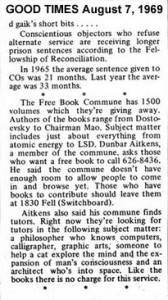
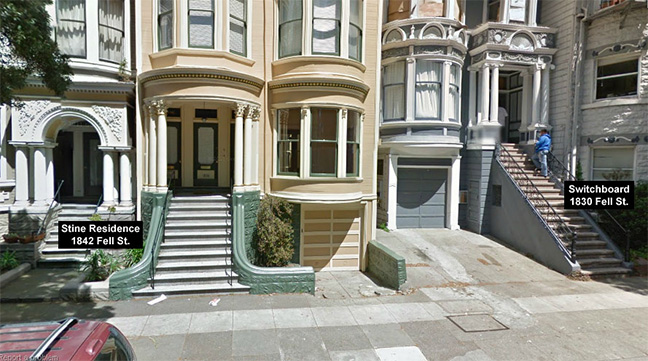
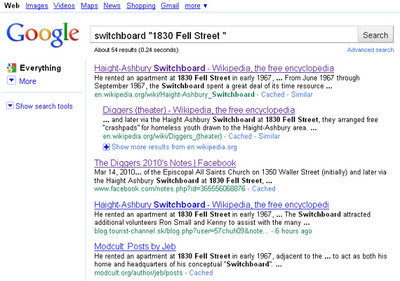
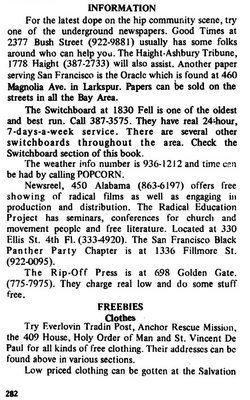

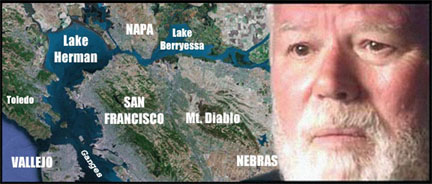
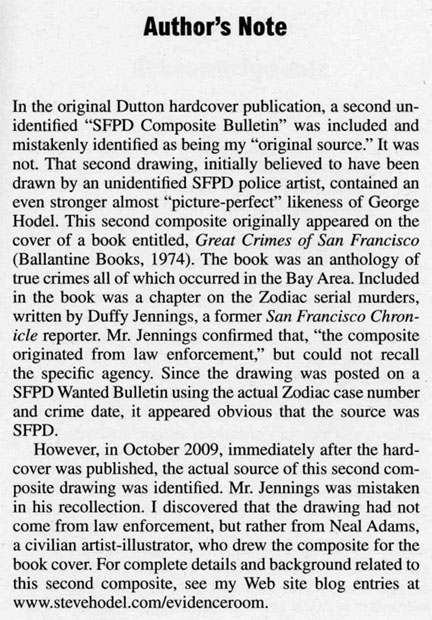
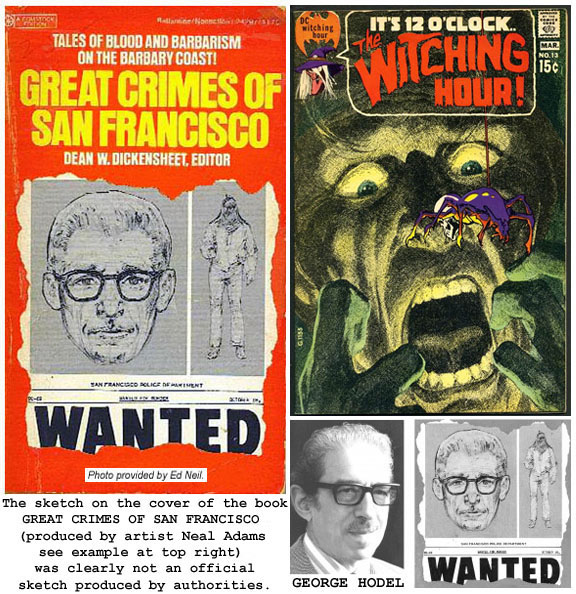
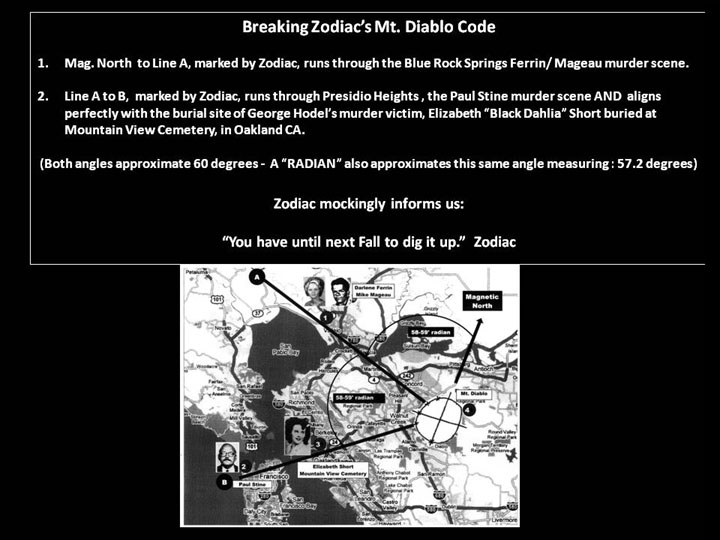
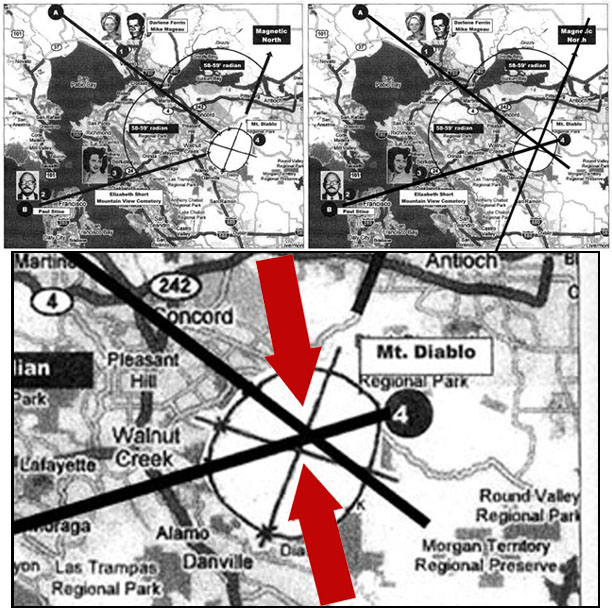
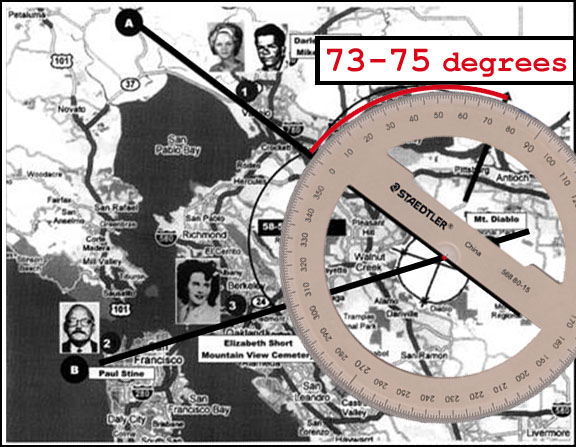
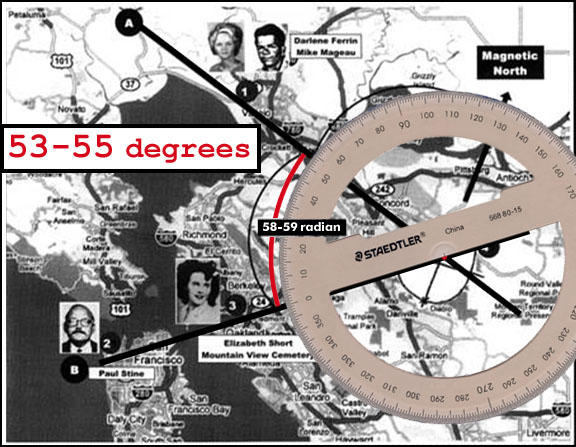

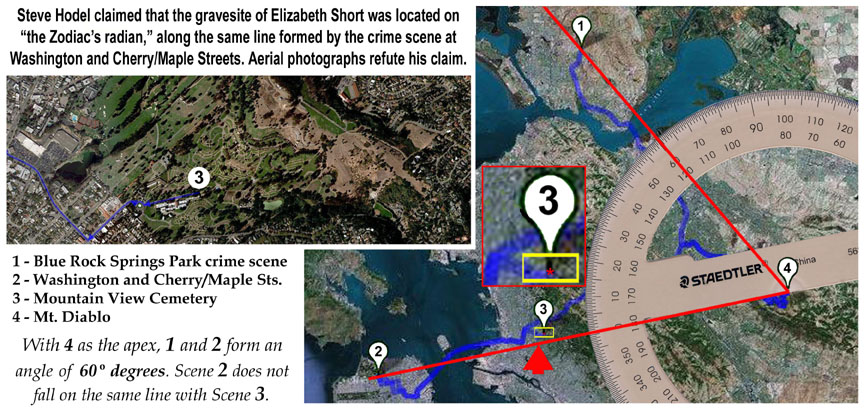
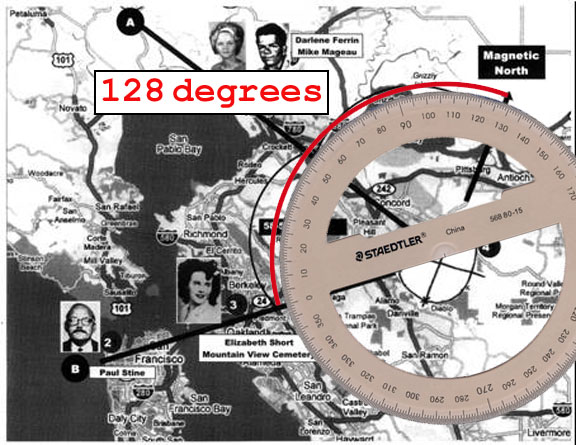
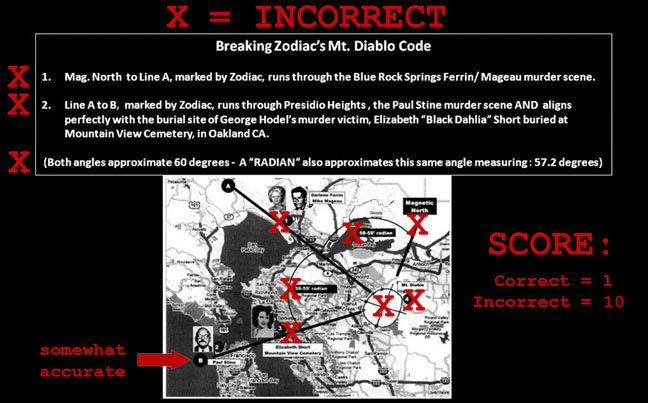
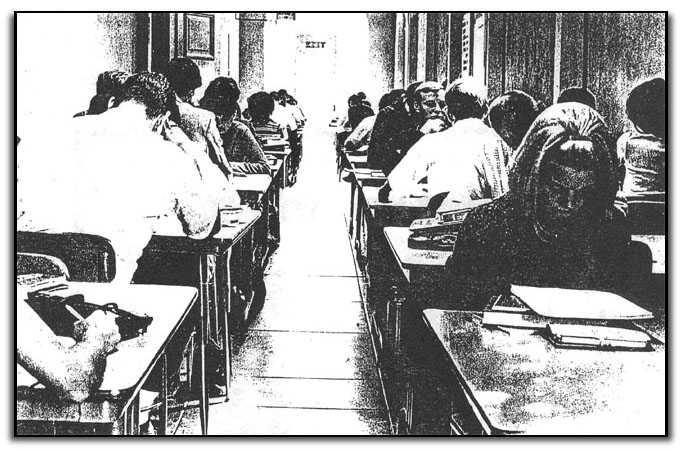
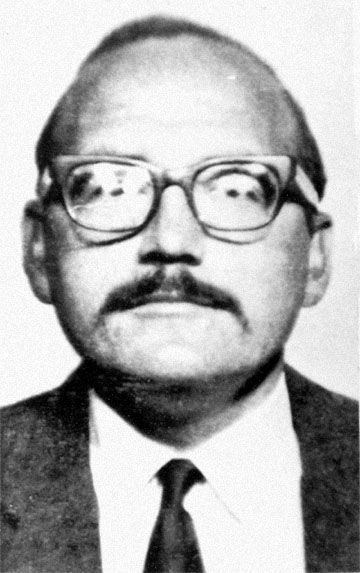
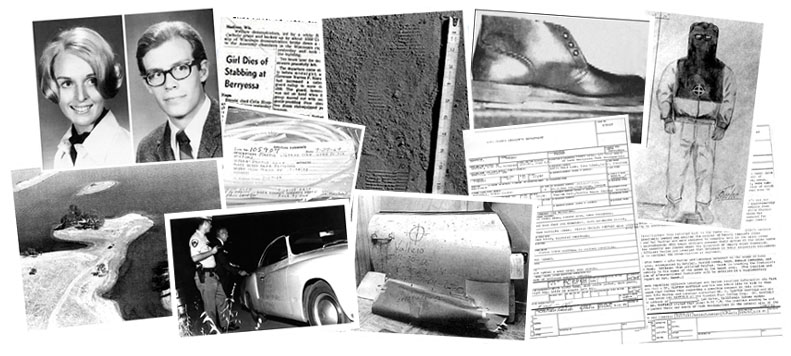

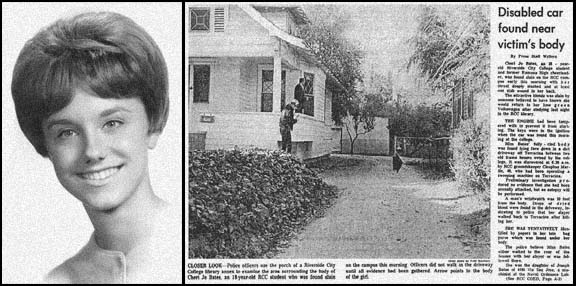

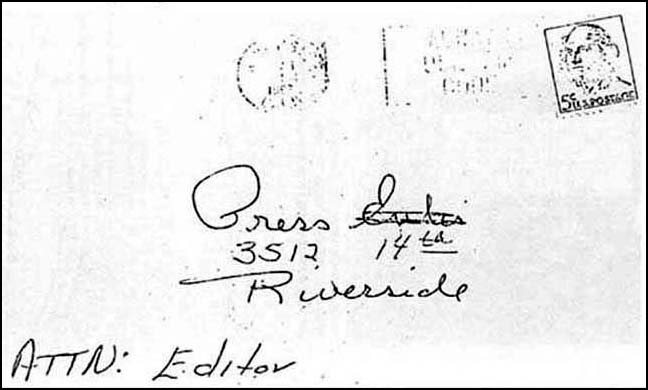
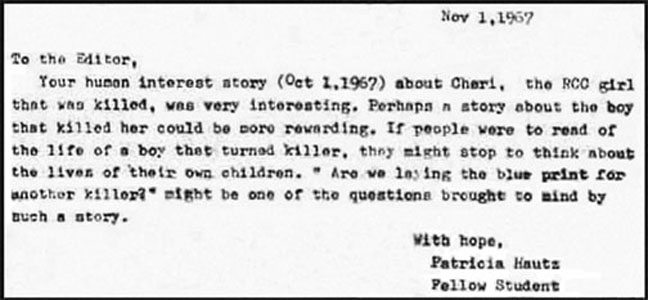
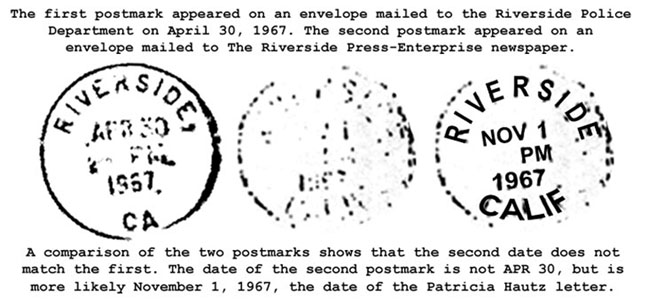
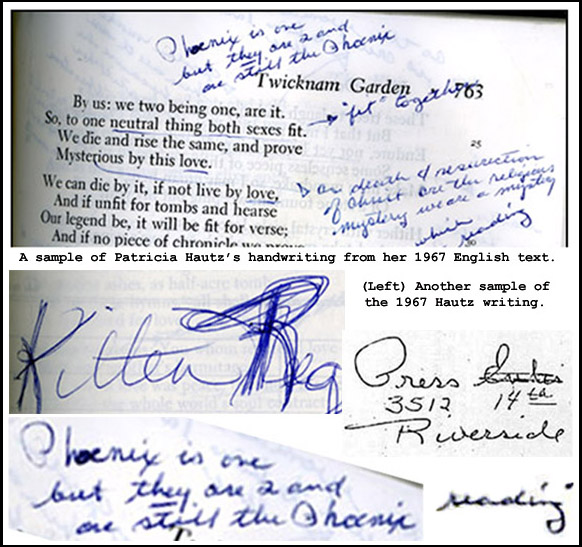
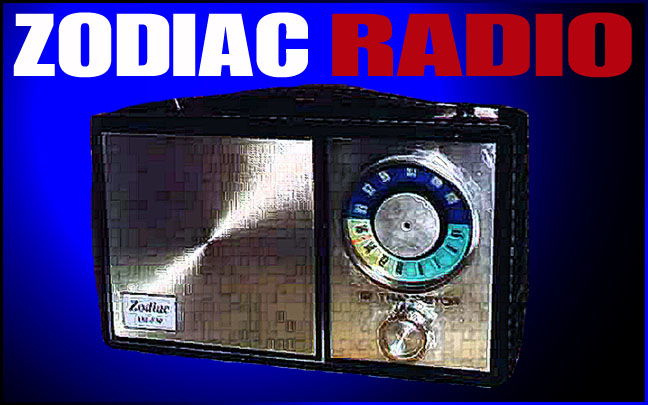






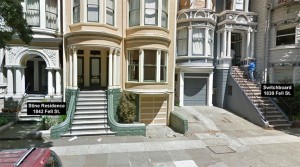
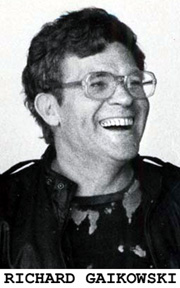
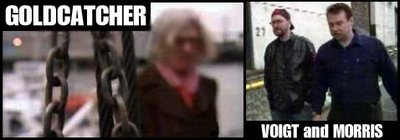
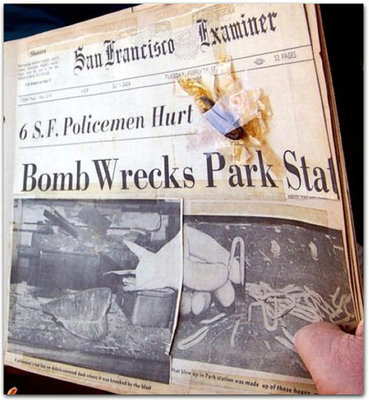
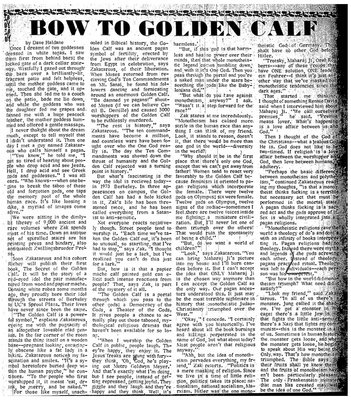
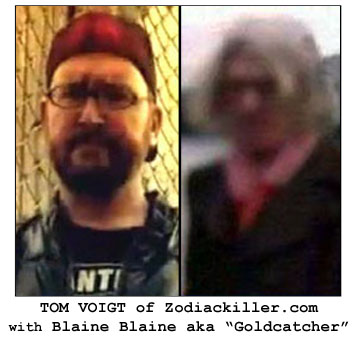

July 19th, 2010 at 9:02 pmDamn fine work uncovering the truth behind toms misleading (and outright false) statements Mike!
Kudos.